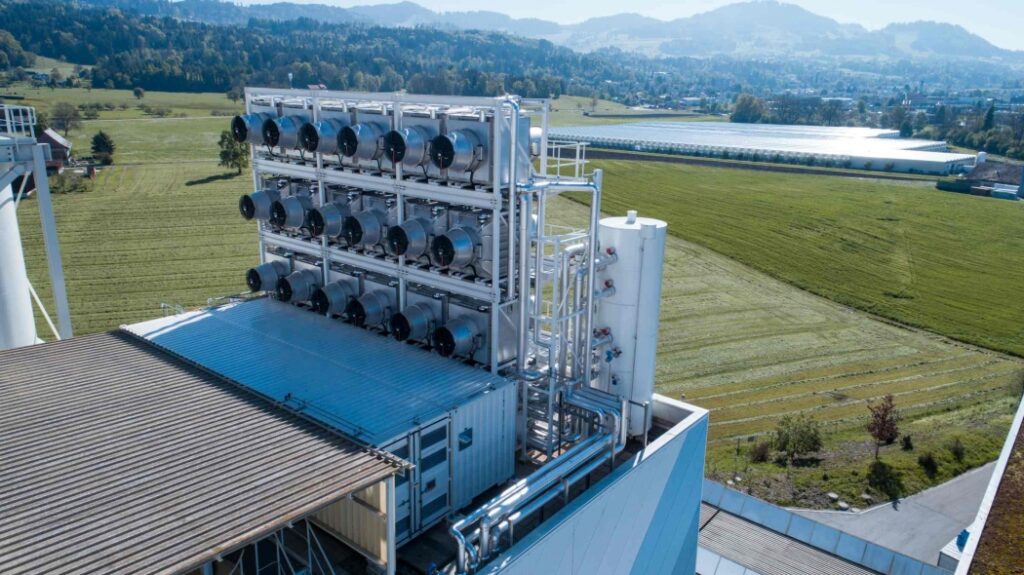
Carbon sequestration: a critical but less-understood piece of the climate puzzle
Removing carbon already in the air is a must for Biden to meet international goals, say UCLA experts
After passing the $1.9 trillion coronavirus relief package, Congress turned its attention to other critical efforts, including comprehensive legislation to battle climate change.
The bill, introduced into the House of Representatives on March 2, aims to fully decarbonize the economy by 2050 by establishing clean electricity standards, promoting electric vehicles and improving the efficiency of buildings.
It would also require the Secretary of Energy to establish a carbon capture and sequestration program.
Carbon sequestration removes carbon dioxide from the atmosphere and stores it long-term in geologic formations, biological systems or industrial products.
Without carbon sequestration, it may not be possible to meet the Paris Agreement’s goal of limiting global warming to below 2 degrees Celsius and avoid the most dangerous consequences related to temperature increases, sea level rise, extreme weather and ecosystem loss.
“People mostly talk about climate change and an energy transition, but not about what to do about the carbon already in the atmosphere,” said UCLA chemical and biological engineer Emily Carter.
A 2019 Nature paper coauthored by Carter, who is also UCLA’s executive vice chancellor and provost, analyzed 10 carbon sequestration pathways. It found each could sequester at least 550 million tons of carbon dioxide per year — a combined effect comparable to removing over 1 billion passenger vehicles from roads.
The pathways include forest restoration, agricultural techniques that increase soil carbon storage, bio-energy with carbon capture and storage, and use of carbon dioxide in chemical polymers, biofuels and building materials.
There is also enhanced oil recovery, by which oil and gas companies inject high-pressure carbon dioxide deep into reservoirs to increase the amount extracted. It is currently the only industrial process that uses carbon dioxide at a significant scale, accounting for 88 percent of global CO2 use. If enhanced oil recovery was optimized for maximum carbon storage rather than the amount of oil and carbon dioxide recovered, upwards of 154 billion tons of CO2 could be sequestered in the world’s oil reservoirs, according to the Nature paper.
Currently, 85% of the carbon dioxide used for enhanced oil recovery is extracted from naturally occurring reservoirs (where the carbon is already sequestered) rather than from the atmosphere. In other words, oil companies dig up more CO2 to increase oil recovery — resulting in a net increase of atmospheric carbon even before the fuels are burned.
Regulations could require companies to utilize carbon dioxide directly captured from the air. While this would not make up for emissions from burning fossil fuels, it would help offset some of them.
Direct air capture removes carbon dioxide from the air by passing it through liquid chemical solutions or by chemically binding it with solid filters. However, the 15 facilities currently in operation globally capture only 9,900 tons of carbon dioxide each year. (Compare that to an estimated 5.6 billion tons of global carbon emissions each year by the United States alone).
Carbon taxes or requirements for companies to offset fossil fuel emissions by sequestering carbon could help direct air capture technologies scale up, Carter said.
Concentrated carbon dioxide produced by direct air capture can also be used to produce chemical polymers, fuels or building materials. As of now, carbon dioxide derived products tend to be more expensive than conventional counterparts, for they require a pure carbon dioxide source, infrastructure, transportation and energy — numerous upfront and variable costs that disincentivize investments in them. But that can change.
“Right now, carbon utilization in products is not practical in terms of its cost,” Carter said. “But the cost will come down with breakthroughs and mass production.”
Implementing a carbon tax would create a level playing field by increasing the price of fossil fuel intensive goods, making carbon sequestration in products more competitive, she added.
Camly Tran, executive director for UCLA’s Institute for Carbon Management, said utilizing carbon dioxide in building materials like cement and concrete has high potential. For example, the startup CarbonBuilt, who’s core technology emerged out of UCLA studies led by civil engineer Gaurav Sant, converts waste carbon dioxide from gases exiting to the atmosphere into solid mineral carbonates (e.g. calcium carbonate) that are then sequestered within concrete products.
“In the future, we are going to hopefully start seeing some implementation of carbon removal solutions on a wider scale,” Tran said. “That’s the key.”
To meet Paris Agreement targets, financial and regulatory incentives would need to stimulate carbon sequestration to 550 million tons per year by 2030 and 5,500 million tons by 2050, according to a 2017 report published in Science.
“We need to work with policymakers, with capital providers to not only get your solutions commercialized, but actually deployed,” Tran said. “Commitment, follow-through, and accountability are required to transition to a lower-carbon economy.”
Thus, the biggest hurdles to deploying carbon sequestration technologies aren’t technical — they’re political and economic.
Holly Buck is an expert on the social and political implications of environmental policies at University of Buffalo. She said federal subsidies or taxes combined with leadership from the Biden administration could push carbon sequestration forward.
“In many places you can put carbon pollution into the atmosphere for free, so unless there’s a regulation against that, people aren’t going to be cleaning it up,” said Buck, a former researcher with UCLA Institute of the Environment and Sustainability. “That’s the main reason why these technologies aren’t mainstream, but that picture is changing.”
Individual philanthropists, research associations and prominent organizations, including Occidental Petroleum, United Airlines and Microsoft, are investing in technologies that capture carbon dioxide directly from the air.
The sequestration tax credit of the Internal Revenue Code Tax currently provides per-ton tax credits for CO2 that is permanently sequestered in products or in geologic formations. A revised version became effective on January 13. In addition, the Department of Energy announced on March 5 that will provide $24 million for carbon capture technology research.
The challenge now is passing policies that are not just effective, but equitable, Buck said.
“Capturing carbon would have the obvious benefit of less CO2 going into the air,” she said. “However, it is important to design policies for pricing carbon that does not make energy or other goods expensive for economically disadvantaged people.”




